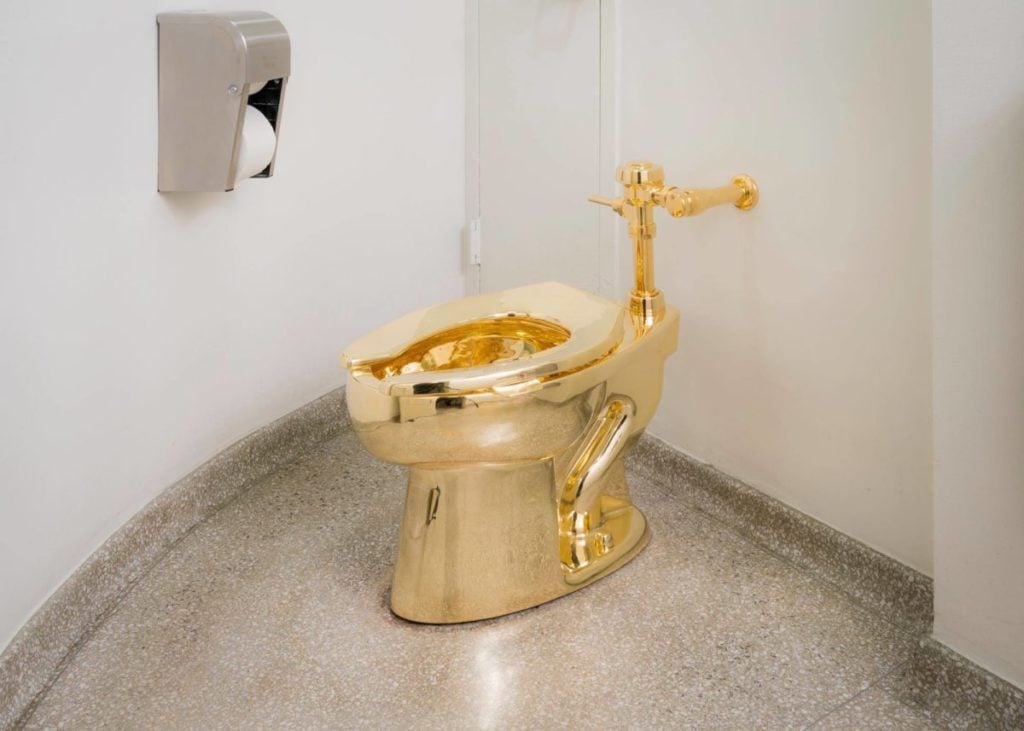On View
You Can Finally Use Maurizio Cattelan’s Majestic Gold Toilet at the Guggenheim
The artist insists his latest work isn't a joke.

The artist insists his latest work isn't a joke.

Henri Neuendorf

After months delays caused by manufacturing difficulties, Maurizio Cattelan’s long-awaited solid gold toilet makes its debut at New York’s Guggenheim Museum today.
The 18-karat gold ‘participatory’ artwork is a fully functional replica of a toilet made by the Wisconsin-based home appliances manufacturer Kohler, and is open for use for visitors of the museum in a restroom on the fifth floor ramp.
The Guggenheim’s associate director of facilities operations, Michael Zall, admitted to the New York Times that the museum’s plumber approached the installation “with some butterflies in his stomach.” He then noted, “If he was ever a regular plumber he’s not anymore.”
Meanwhile, the artist said he was delighted his site-specific artwork finally made it to the museum. “I’m happy because it’s not on a pedestal, it’s not in a gallery,” he told the Times. “It’s in a little room, just waiting for whenever you need it.”

Maurizio Cattelan. Courtesy of Rob Kim/Getty Images for Tribeca Film Festival.
Although Cattelan built his career as the art world’s prankster, the gold toilet, titled America (2016), is much more than an elaborate practical joke.
On the one hand, is Cattelan’s nod towards Marcel Duchamp’s Fountain and the legacy of the readymade. And on the other hand, is the exploration of themes of inequality, consumer culture, and wealth within the art world, juxtaposed against the great egalitarian leveler of human bodily functions.
If you gotta go, you gotta go—and it doesn’t matter if you can afford to take care of business on a toilet made of solid gold toilet or on a more modest porcelain version.
The Guggenheim and the artist have remained tight-lipped over the price of the gold toilet, although they did say that anonymous private donors chipped in to pay for it.
At a press briefing on Thursday, Cattelan reportedly joked that his new work is “one percent art for the ninety-nine percent.” Indeed, in a “don’t touch” museum environment it gives visitors an unprecedented amount of one-on-one time with an artwork from a world-famous artist.